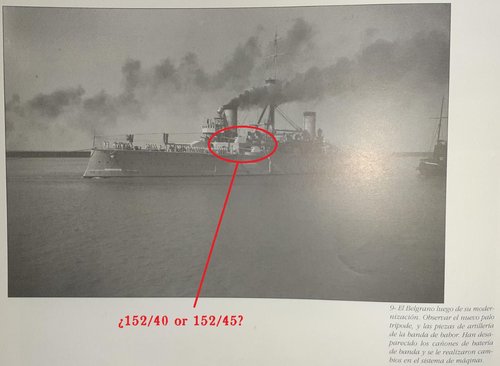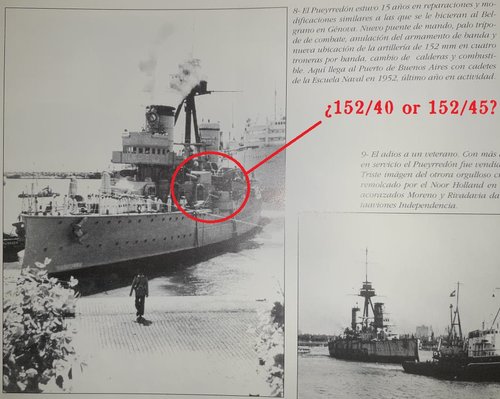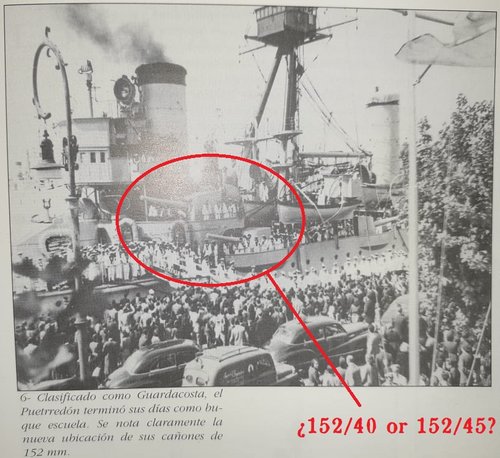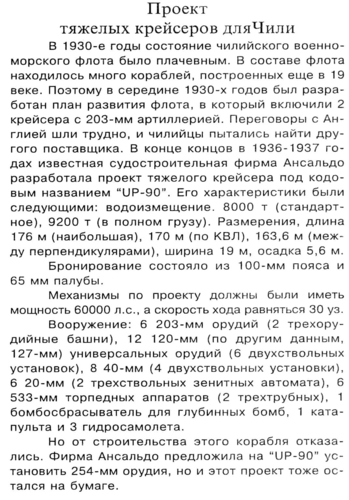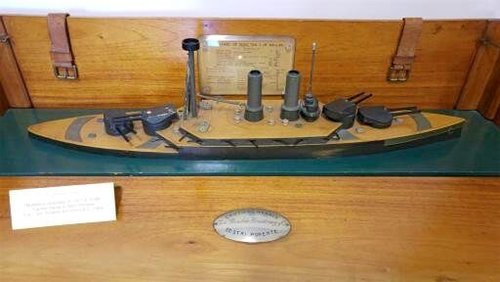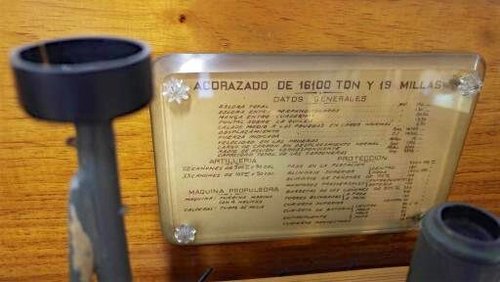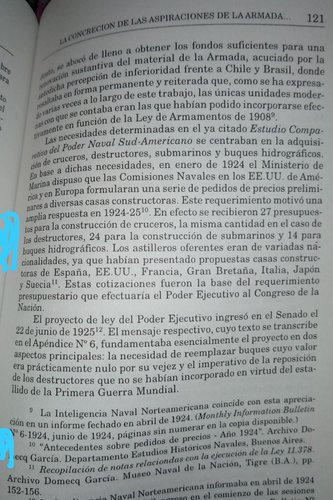Your comment will not be moderated I suppose as Stefano past away years ago. I've saved the images from both of his sites as a precaution so if you find interesintg articles there I suggest doing the same.
Ohh, that's sad. He did a
good work in that website

That battleship is most likely a generic offer for South America or indeed for Spain or Portugal (Portugal too was searching for battleships )
The
Plate is in Spanish, so Spain, Chile or Argentina. I discard Portugal or even Brazil.
If the year is correct, it adjusts to the
Spanish requirements, but in no way to the Argentine or Chilean ones. Due to the general characteristics and the designs presented by Ansaldo, I think it is Spanish.
I rule out that it is
Argentine because:
- In October 1908 the tender was formalized for two dreadnoughts (+20.000t) with an option for a third four scouts (650t) and 6 torpedo boats (350t). The Ansaldo-Armstrong house presented the "Progetto 1908" (15x305 mm and 22 knots).
- Towards August 1909 the best technical designs were from the Ansaldo house. These were taken as the basis for the other companies to present improvements to theirs. By then it was already known in detail what the characteristics of the "Minas Gerais" class were (far superior to this "Ansaldo 1909" design that I discard here).
- In October 1909 an even more demanding comprehensive program was established (battleships with 12x305, 12x152, 12x100 +254 belt and +22 knots and 12 torpedo scouts of 4x100, 4x530, 32 k and 1000 t) the Ansaldo house improved the armor of its previous design (supposedly 229 to 254 mm). But by that time the other companies were already making the same "Plano Argentino" or "Argentine Type" and improving the characteristics, manufacturing times and costs of these ships.
- Towards the end of October 1909 Ansaldo shows a notable improvement in armor (supposedly from 254 to 279 mm) and in speed (of 24 knots). But before formalizing the winner in Argentina, it was known that the manufacturer would be Bethlehem Steel (the one that would buy Fore River).
- In January 1910 the American company wins. The above irregularities generated protests from Italian Ambassador Cellere and Marquis Guicciardini. Economic and political sanctions were applied to Argentina and the manufacture of destroyers in this country was made impossible (later only carried out in the United Kingdom, Germany and France) as compensation for the irregularities.
Sources:
B.C.N. T.26 P.804 -
B.C.N. T.27 P.714 - Etchepareborda, R. The Naval Armaments of 1908.
Regarding
Chile, I have no record in spanish or english of this nation having contacted Ansaldo for the construction of a battleship (american Bethlehem a couple of mentions). There are previous registrations for the purchase of one or two Garibaldi class armored cruisers and later for the purchase of light or heavy cruisers of the Condoretti or Trento class.
Not forget South America includes Venezuela, Uruguay, Peru, Columbia and Ecuador. Ecuador and Paraguay are unlikely but not impossible to buy these, so that still leaves the three other larger counties on that continent to be offered.
Vickers offered Destroyers and Cruisers (Light and Heavy) for Venezuela though only after WW2 till mid 1950's
I've not yet found mentions of designs fro Columbia
But Armstrong offered a BB for Peru in 1914 and Vickers in 1911
For Uruguay offers were made for Frigates, Destroyers, Cruisers (light and scout) and even a Battleship
and as a sidenote offers were made for Cuba in scout and light cruiser category
And a single design for Mexico which might be a monitor, a very small heavy cruiser or light coastal battleship with 1x2 8", 2x2 6", 4x1 4,7"
And about other Latin American nations, from
Peru i have this list:
1905.7 - Vickers similar to N°188 - Predreadnough 254-50x12 (?)
1907.6 - Peruvian navy design traditional guns - Dreadnought 305x12 (WIP)
1907.6 - Peruvian navy design vertical guns - Dreadnought 305x12 (WIP)
1911.2 - Vickers N°512 -
Dreadnought 356-45x4
1911.3 - Vickers N°513 -
Dreadnought 356-45x6
1914.2 - Armstrong N°783P - 203-50x4
1920 - Gorgon - 234x2
Other countrys of LA had no monetary, financial, crew or infrastructure to get and support dreadnoughts or big ships (armoured or protected cruisers). Not even Cuba or Mexico. The annual maintenance cost of a dreadnought is estimated to be between 10 and 20 percent of its purchase value (forget the source). To exemplify this Argentina, Brazil and Chile had to build their own big dykes (
the latter still having received her dreadnought 10 years after the first had to rent for years in Panama for maintenance) at costs and efforts unattainable for the rest of Latin America.
Edited: Not peruvian.

